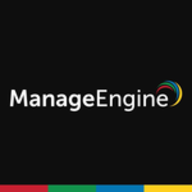

ManageEngine Log360 and Elastic Observability compete in the logging and monitoring category, offering distinct solutions for various enterprise needs. Elastic Observability appears to have an edge with its comprehensive features, which may justify its higher cost for some users.
Features: ManageEngine Log360 is known for its integration with diverse IT systems, user-friendly alert configurations, and efficient log management capabilities. Elastic Observability stands out with extensive data visualization tools, real-time analytics, and advanced capabilities needed by users requiring a rich feature set.
Room for Improvement: ManageEngine Log360 could enhance its reporting structures, interface intuitiveness, and overall system navigation. Elastic Observability could improve technical documentation, ease of use for new adoptees, and streamline user onboarding processes.
Ease of Deployment and Customer Service: Deploying ManageEngine Log360 is straightforward, with responsive support assisting in issue resolution. Elastic Observability, being more complex, entails a steeper learning curve, although it gains positive feedback for knowledgeable technical support.
Pricing and ROI: ManageEngine Log360 is commended for its transparent pricing model and decent ROI, attracting budget-conscious organizations. Elastic Observability, despite being more costly, reportedly delivers substantial long-term value for businesses focusing on detailed observability.
If unauthorized personnel attempt to add logs, the monitoring informs the administrator, enabling them to act promptly, leading to savings in both time and money for the company.
Elastic support really struggles in complex situations to resolve issues.
The solutions they provide are valuable.
Elastic Observability seems to have a good scale-out capability.
Elastic Observability is easy in deployment in general for small scale, but when you deploy it at a really large scale, the complexity comes with the customizations.
What is not scalable for us is not on Elastic's side.
The technical support from ManageEngine is very good.
There are some bugs that come with each release, but they are keen always to build major versions and minor versions on time, including the CVE vulnerabilities to fix it.
It is very stable, and I would rate it ten out of ten based on my interaction with it.
Elastic Observability is really stable.
For instance, if you have many error logs and want to create a rule with a custom query, such as triggering an alert for five errors in the last hour, all you need to do is open the AI bot, type this question, and it generates an Elastic query for you to use in your alert rules.
It lacked some capabilities when handling on-prem devices, like network observability, package flow analysis, and device performance data on the infrastructure side.
Some areas such as AI Ops still require data scientists to understand machine learning and AI, and it doesn't have a quick win with no-brainer use cases.
Log360 currently cannot gather information from Intune logs or cloud-integrated systems.
The license is reasonably priced, however, the VMs where we host the solution are extremely expensive, making the overall cost in the public cloud high.
Elastic Observability is cost-efficient and provides all features in the enterprise license without asset-based licensing.
Observability is actually cheaper compared to logs because you're not indexing huge blobs of text and trying to parse those.
The price is suitable from a perspective of different pricing options.
The most valuable feature is the integrated platform that allows customers to start from observability and expand into other areas like security, EDR solutions, etc.
the most valued feature of Elastic is its log analytics capabilities.
All the features that we use, such as monitoring, dashboarding, reporting, the possibility of alerting, and the way we index the data, are important.
All mandatory regulatory compliance reports are available with the integrated system, and companies can easily customize reports without coding to meet their policy or reporting requirements.
| Product | Market Share (%) |
|---|---|
| Elastic Observability | 1.3% |
| ManageEngine Log360 | 1.2% |
| Other | 97.5% |


| Company Size | Count |
|---|---|
| Small Business | 8 |
| Midsize Enterprise | 4 |
| Large Enterprise | 16 |
| Company Size | Count |
|---|---|
| Small Business | 13 |
| Midsize Enterprise | 2 |
| Large Enterprise | 1 |
Elastic Observability offers a comprehensive suite for log analytics, application performance monitoring, and machine learning. It integrates seamlessly with platforms like Teams and Slack, enhancing data visualization and scalability for real-time insights.
Elastic Observability is designed to support production environments with features like logging, data collection, and infrastructure tracking. Centralized logging and powerful search functionalities make incident response and performance tracking efficient. Elastic APM and Kibana facilitate detailed data visualization, promoting rapid troubleshooting and effective system performance analysis. Integrated services and extensive connectivity options enhance its role in business and technical decision-making by providing actionable data insights.
What are the most important features of Elastic Observability?Elastic Observability is employed across industries for critical operations, such as in finance for transaction monitoring, in healthcare for secure data management, and in technology for optimizing application performance. Its data-driven approach aids efficient event tracing, supporting diverse industry requirements.
Log360 is your one-stop solution for all log management and network security challenges. It is an integrated solution that combines EventLog Analyzer and ADAudit Plus into a single console to help you manage your Active Directory auditing and network security easily.
We monitor all Log Management reviews to prevent fraudulent reviews and keep review quality high. We do not post reviews by company employees or direct competitors. We validate each review for authenticity via cross-reference with LinkedIn, and personal follow-up with the reviewer when necessary.